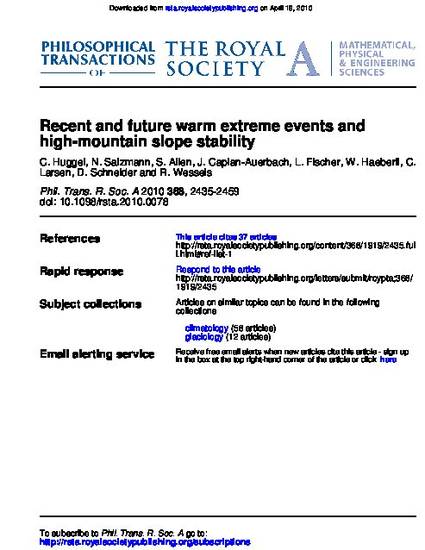
- Warm extremes,
- Avalanches,
- Slope instabilities
The number of large slope failures in some high-mountain regions such as the European Alps has increased during the past two to three decades. There is concern that recent climate change is driving this increase in slope failures, thus possibly further exacerbating the hazard in the future. Although the effects of a gradual temperature rise on glaciers and permafrost have been extensively studied, the impacts of short-term, unusually warm temperature increases on slope stability in high mountains remain largely unexplored. We describe several large slope failures in rock and ice in recent years in Alaska, New Zealand and the European Alps, and analyse weather patterns in the days and weeks before the failures. Although we did not find one general temperature pattern, all the failures were preceded by unusually warm periods; some happened immediately after temperatures suddenly dropped to freezing. We assessed the frequency of warm extremes in the future by analysing eight regional climate models from the recently completed European Union programme ENSEMBLES for the central Swiss Alps. The models show an increase in the higher frequency of high-temperature events for the period 2001–2050 compared with a 1951–2000 reference period. Warm events lasting 5, 10 and 30 days are projected to increase by about 1.5–4 times by 2050 and in some models by up to 10 times. Warm extremes can trigger large landslides in temperature-sensitive high mountains by enhancing the production of water by melt of snow and ice, and by rapid thaw. Although these processes reduce slope strength, they must be considered within the local geological, glaciological and topographic context of a slope.
Available at: http://works.bepress.com/jacqueline_caplan-auerbach/15/
